Client Background:
Our Client (Primetime Entertainment & Events) is a company that specializes in providing entertainment and event services, catering to a wide range of occasions and clients. They likely offer a variety of entertainment options, such as musicians, bands, DJs, comedians, magicians, and other performers, handling everything needed for scheduling and booking event venue and gigs(services).
Challenges Faced by the Client
Primetime Entertainment faced challenges in managing gig bookings for artists. They were using Zoho CRM for event-related operations, but needed a custom solution to manage bookings more efficiently. They wanted to:
-
-
Allow musicians, bands, and performers to book shows at venues.
-
Enable event organizers to hire performers.
-
Allow artists to manage their schedules and gigs.
-
Additionally, the client wanted to sync event, venue, and performer bookings with Zoho CRM to keep everything in sync. However, Zoho Creator’s native pages presented design limitations that made it hard to create an interactive and dynamic user interface.
Key Issues with Zoho Creator Pages:
-
-
CSS/JavaScript Restrictions: Limited ability to customize styling and interactivity.
-
No Support for Modern UI Frameworks: Libraries like Node.js or Vue.js couldn’t be integrated for advanced features.
-
While Zoho Creator offers a solid backend, its native pages lack the flexibility needed for a highly interactive and visually appealing UI.
To overcome these limitations, we recommended using Zoho Creator's Customer Portal for a more dynamic and user-friendly experience within the Zoho Creator ecosystem.
Our Proposed Solution:YAALI’s Custom-Built BOOKMYGIG App
To address these challenges, we built BOOKMYGIG, a custom app that leverages Zoho Creator as the backend and Angular for the front-end.
This combination helped us to do:
-
-
Advanced Customization: Using Angular, we built a dynamic, interactive UI for a superior user experience.
-
Smooth Data Sync: The Zoho Creator JS SDK ensures seamless communication between Zoho Creator and the Angular framework, enabling real-time data syncing between the app and Zoho CRM.
-
User-Friendly Experience: We used Angular to create a highly interactive event calendar and booking system that makes managing gigs easier for both performers and event organizers.
-
BOOKMYGIG app is designed to simplify the gig booking process for performers and event organizers.
We Took Gig Booking to the Next Level with Zoho Creator—Here’s How
1. Artist Registration and Event Booking Management: Event booking management is simplified within the app. Our client created a list of available services with prices for artists to view and book gigs. When a new inquiry is received, the app automatically sends a registration link to artists to sign up. Once registered, artists can start booking gigs through the app.
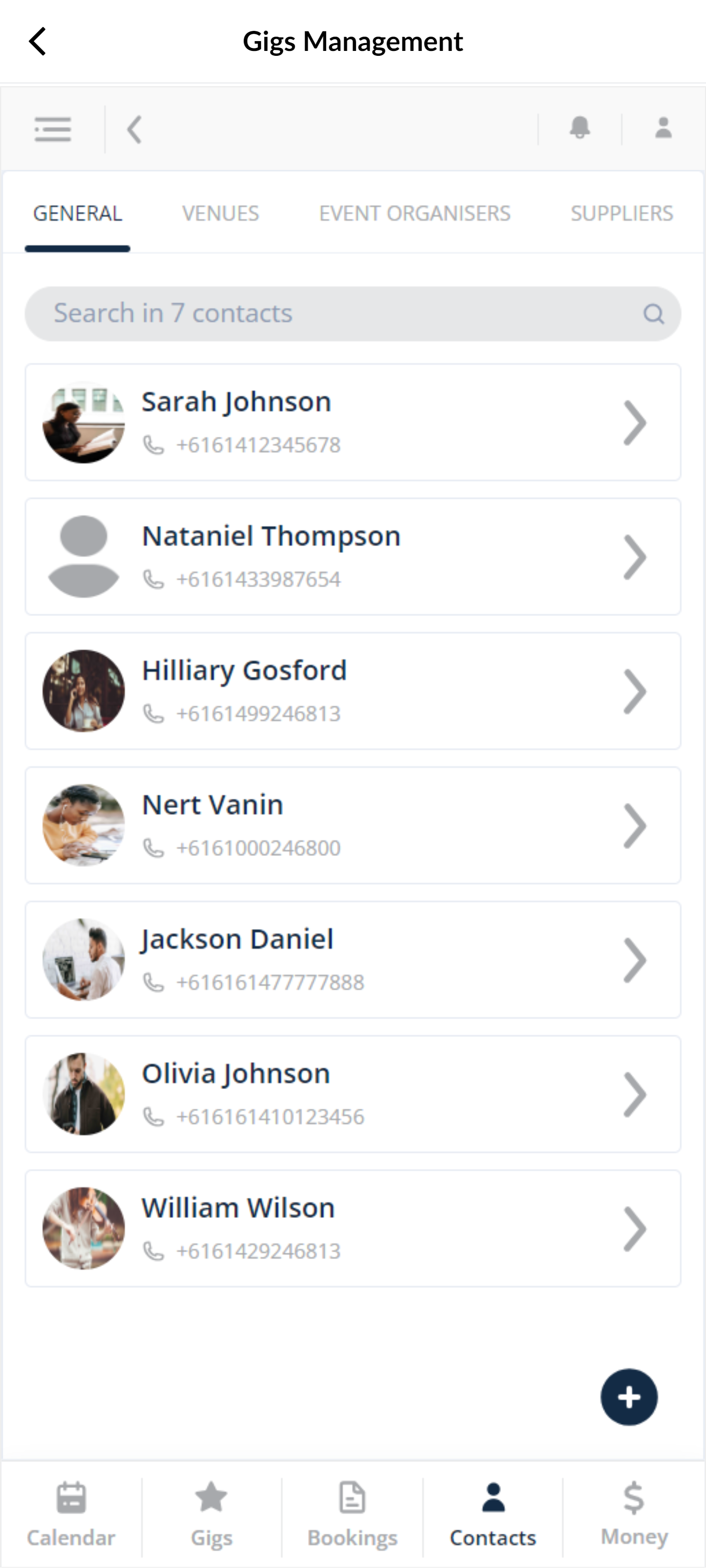
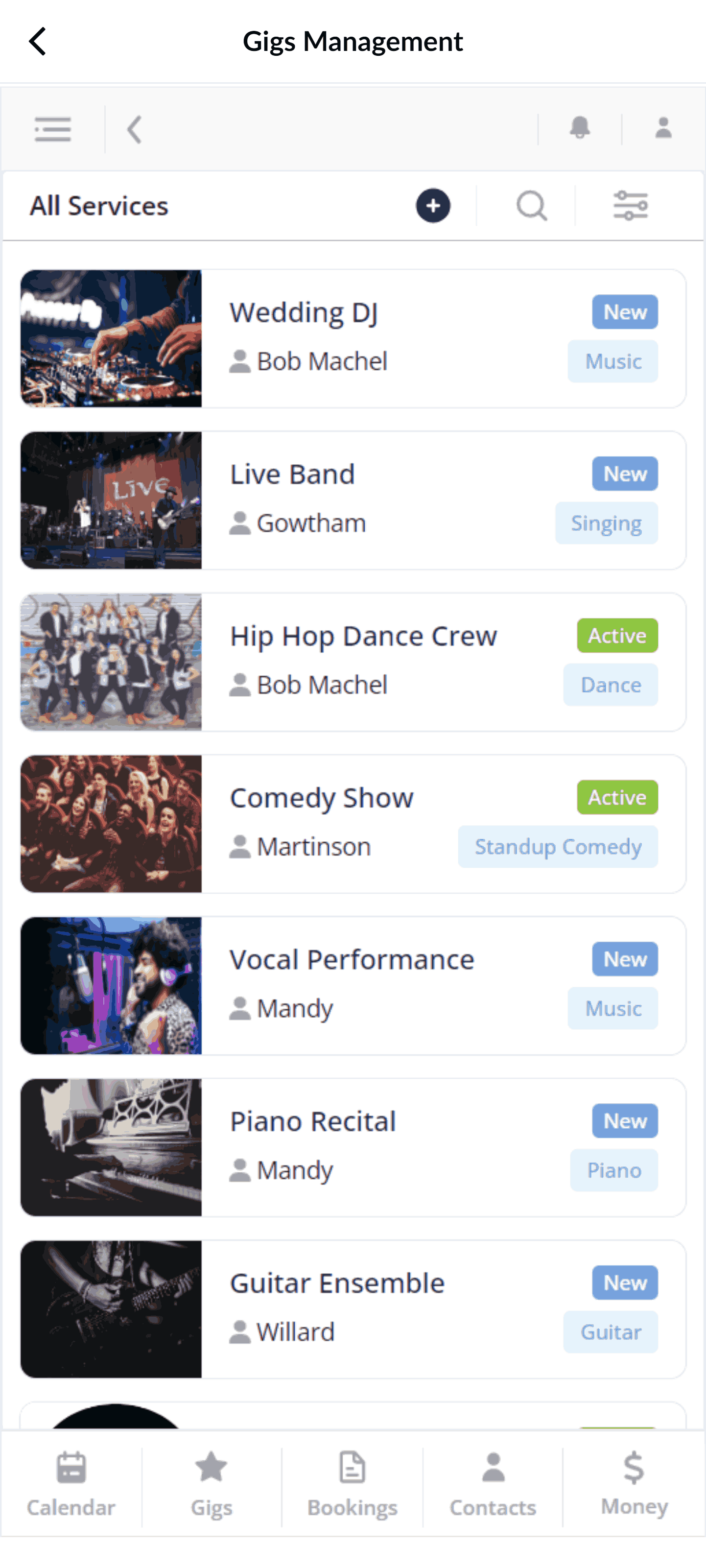
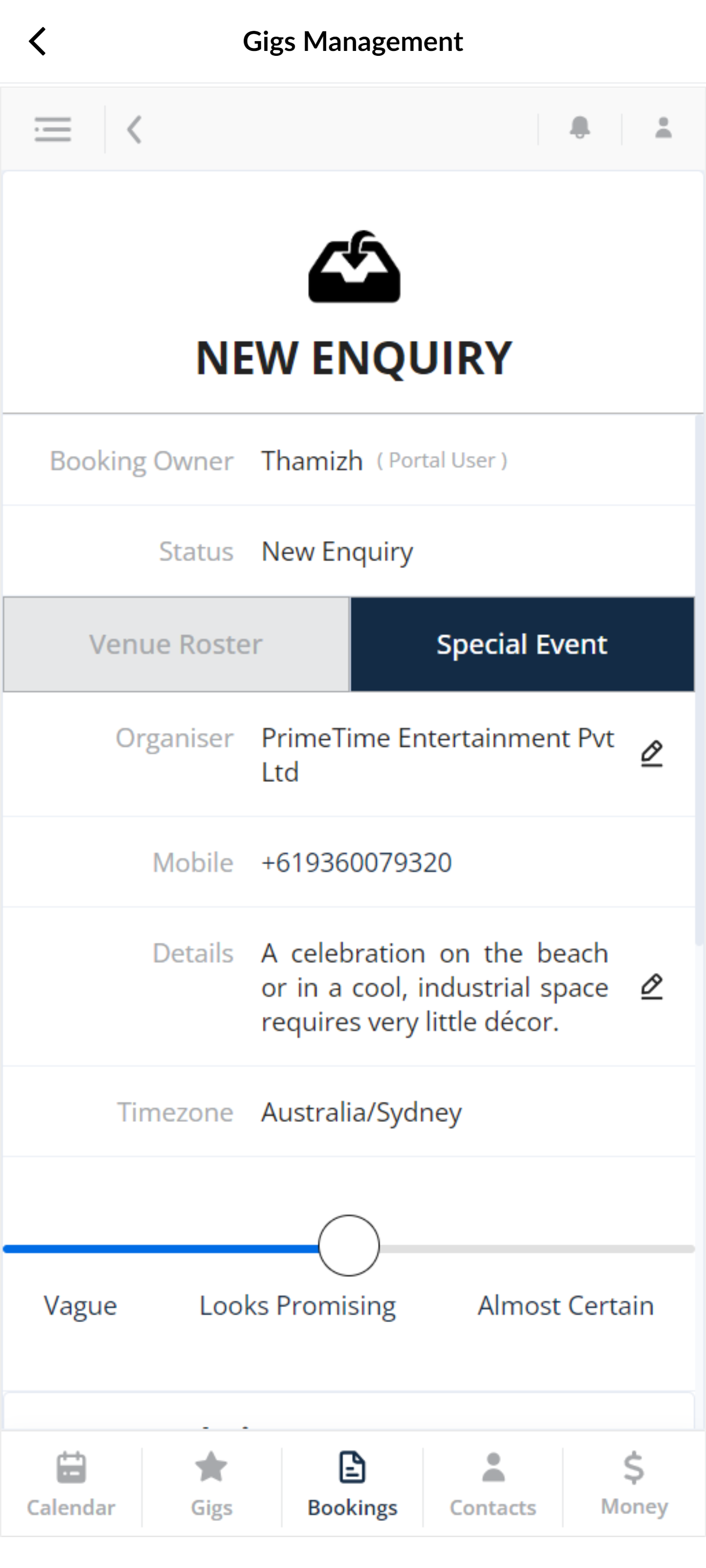
2. Event Calendar: An Event Calendar widget built using Angular gives artists a visual overview of all confirmed events. This calendar makes it easy to view, modify, and manage event details like location, time, and participants. Additionally, artists can quickly add or modify events directly from the calendar interface, ensuring their schedule remains up-to-date and organized.
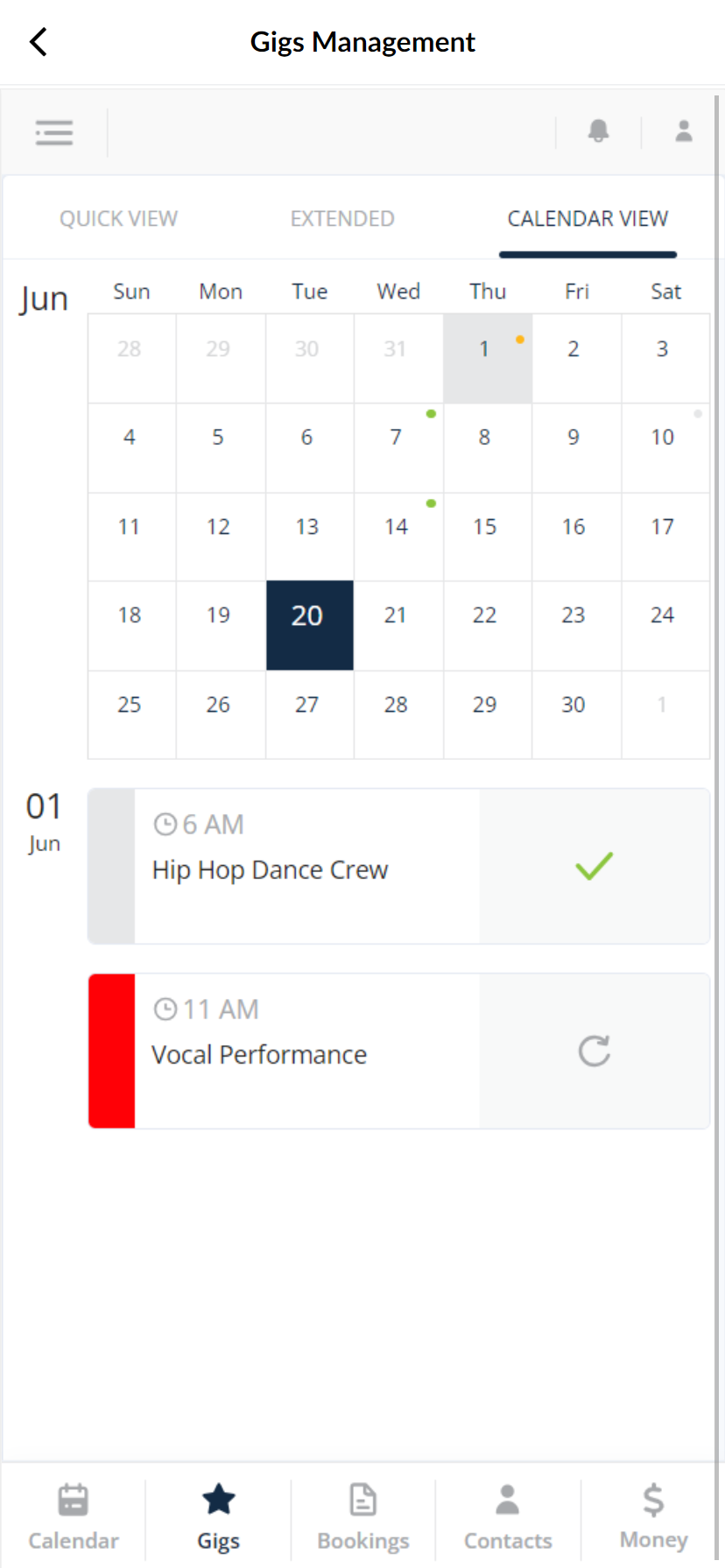
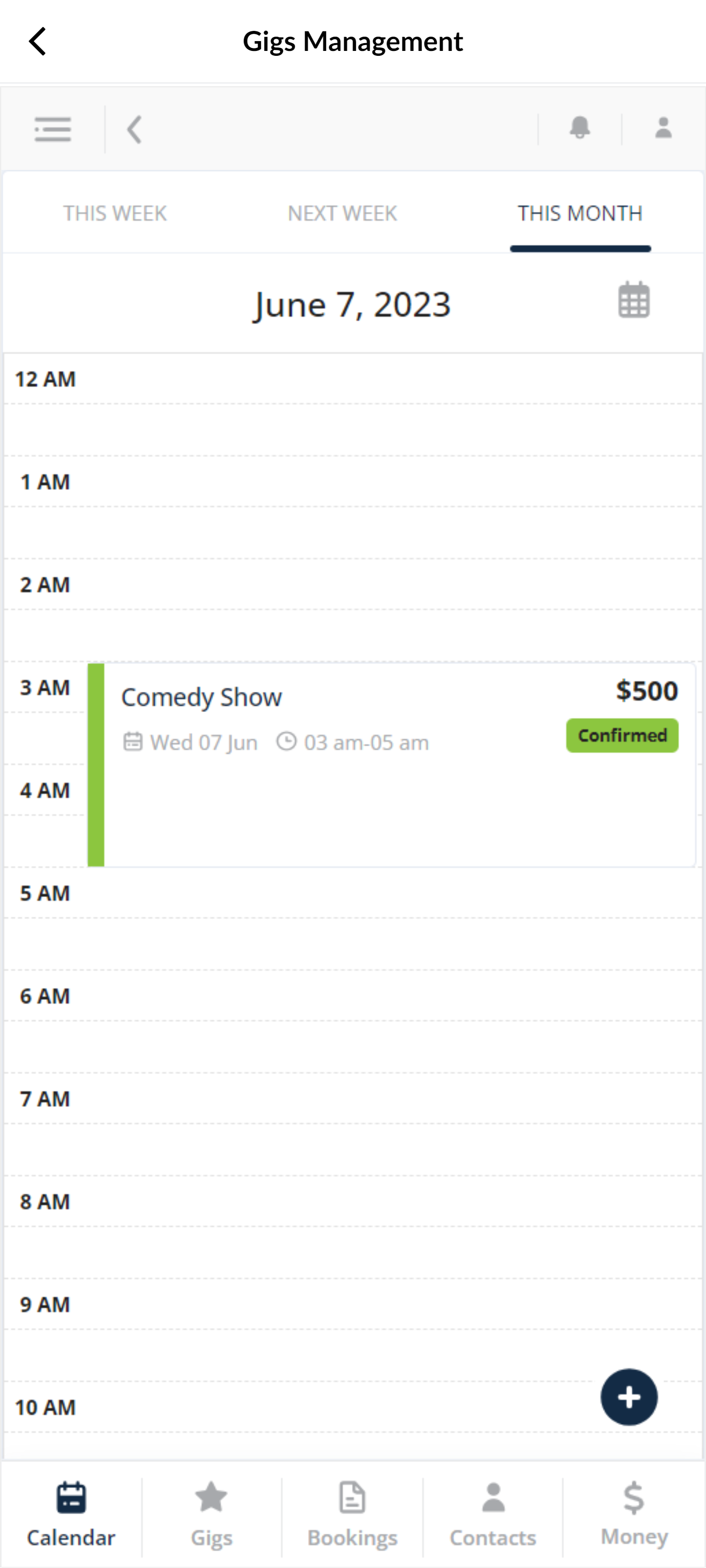
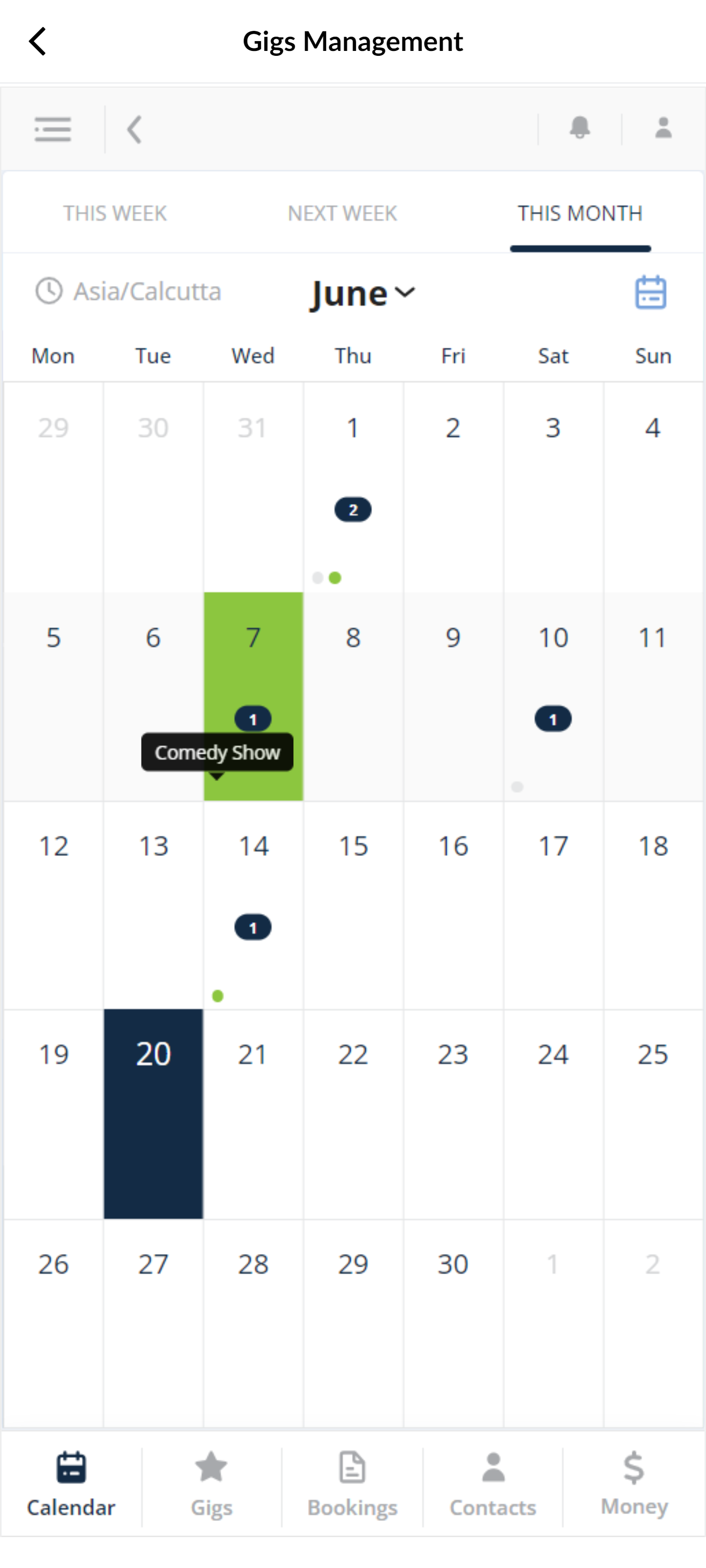
3. Gigs Booking: The Gigs Booking module in the BOOKMYGIG app is a central feature designed to simplify the process of booking gigs, likely focusing on connecting performers (such as musicians, DJs, or other entertainers) with event organizers
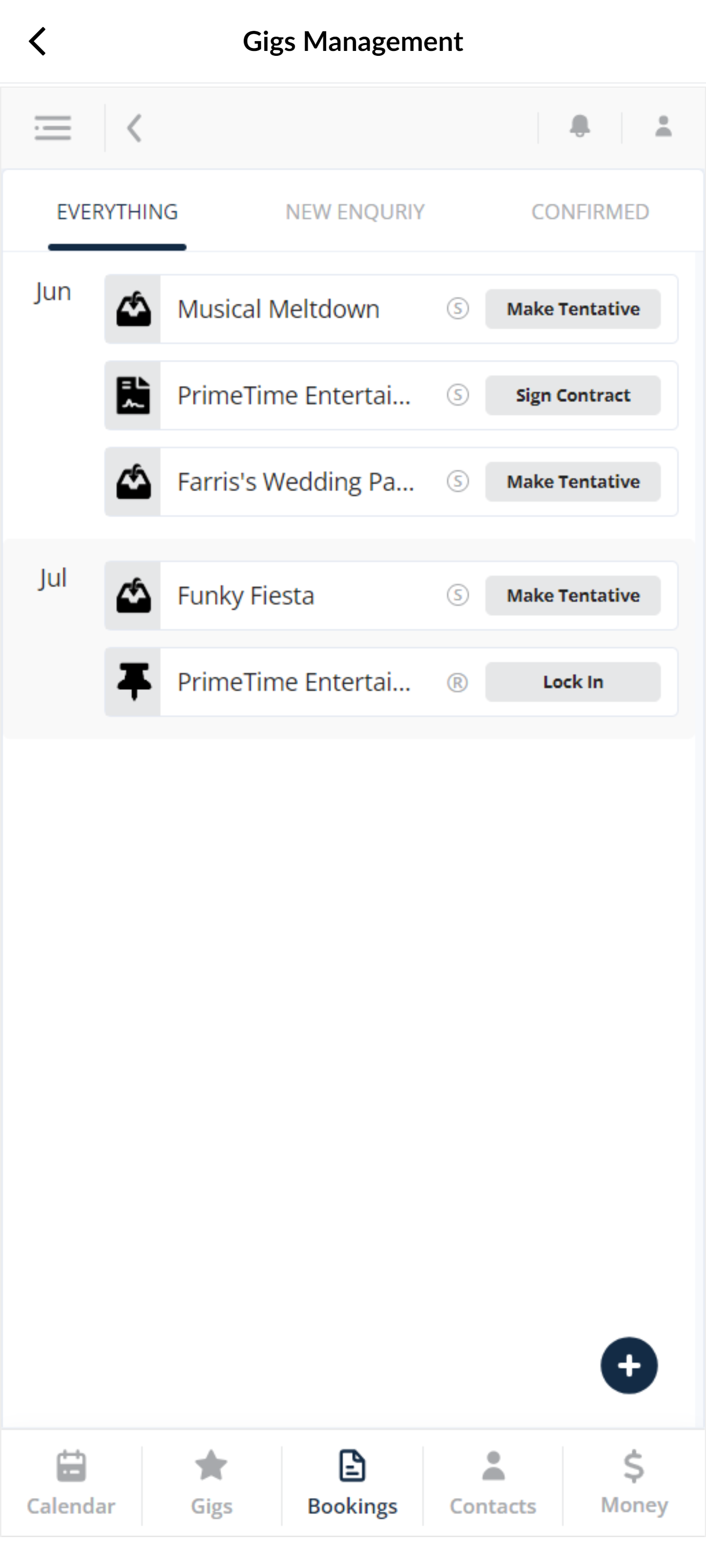
The typical user flow for the Gigs Booking module would look like this :
-
-
Login: Users access the app and navigate to the Gigs Booking module.
-
Search: They input preferences (e.g., location, date, or type of gig) to find available options.
-
Select: They choose a gig or performer and review its details.
-
Book: They confirm the booking, possibly agreeing to terms or submitting a request.
-
Booking Gigs Management: Both the client (event booking management company) and the performer can manage bookings and automated reminders to keep everything on track and options to adjust or cancel the bookings if needed.
-
4. Once the request is sent to the event management company, they will check the following things:
DATE & TIME -even if it’s just an estimate of the start time
LOCATION(or venue),
The SIZE -how many guests/attendees are you planning for?
The THEME(or occasion)
-
Wedding, Corporate Function, Birthday?
-
Modern, Classic, Urban, Country?
-
Dress up, dress down, costume, black tie?
-
Ticketed event? Free community event? etc.
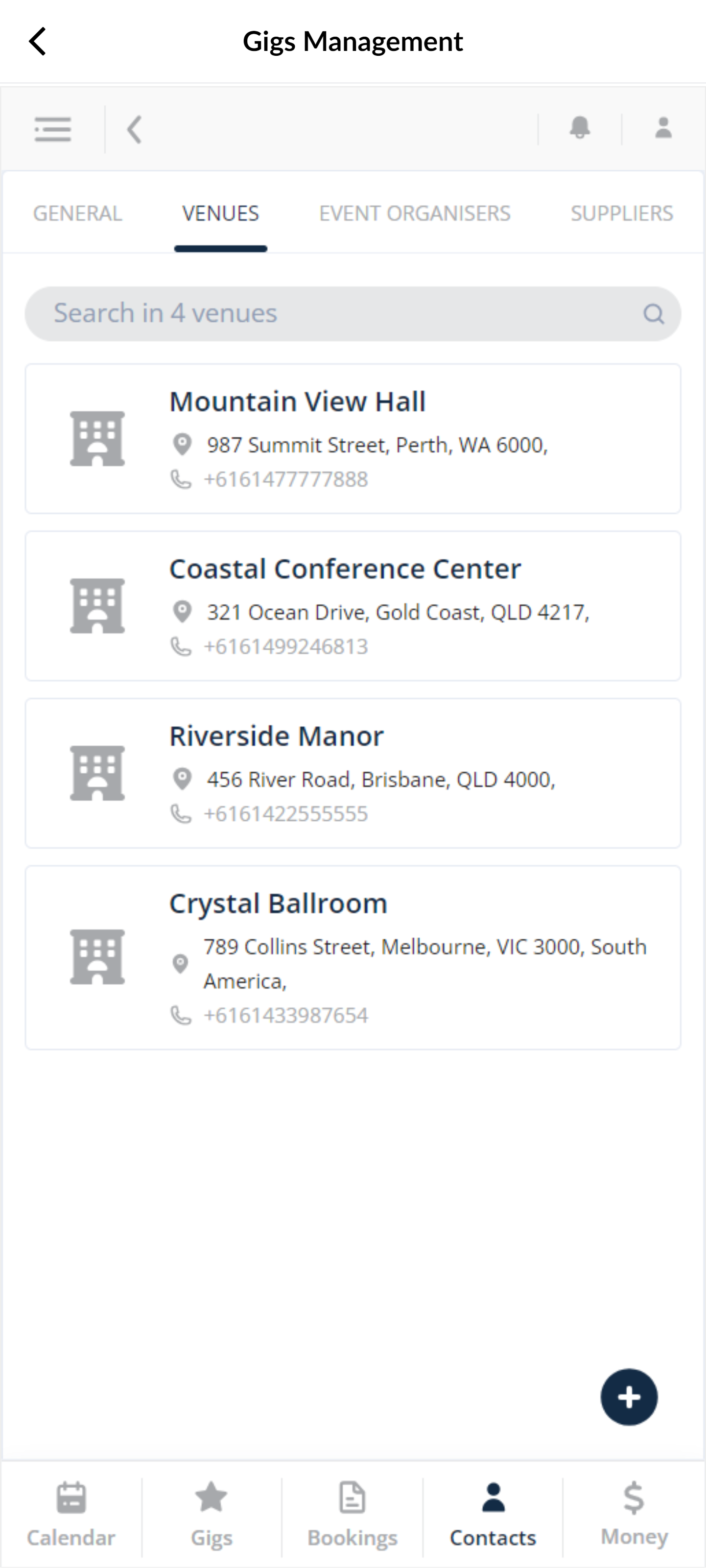
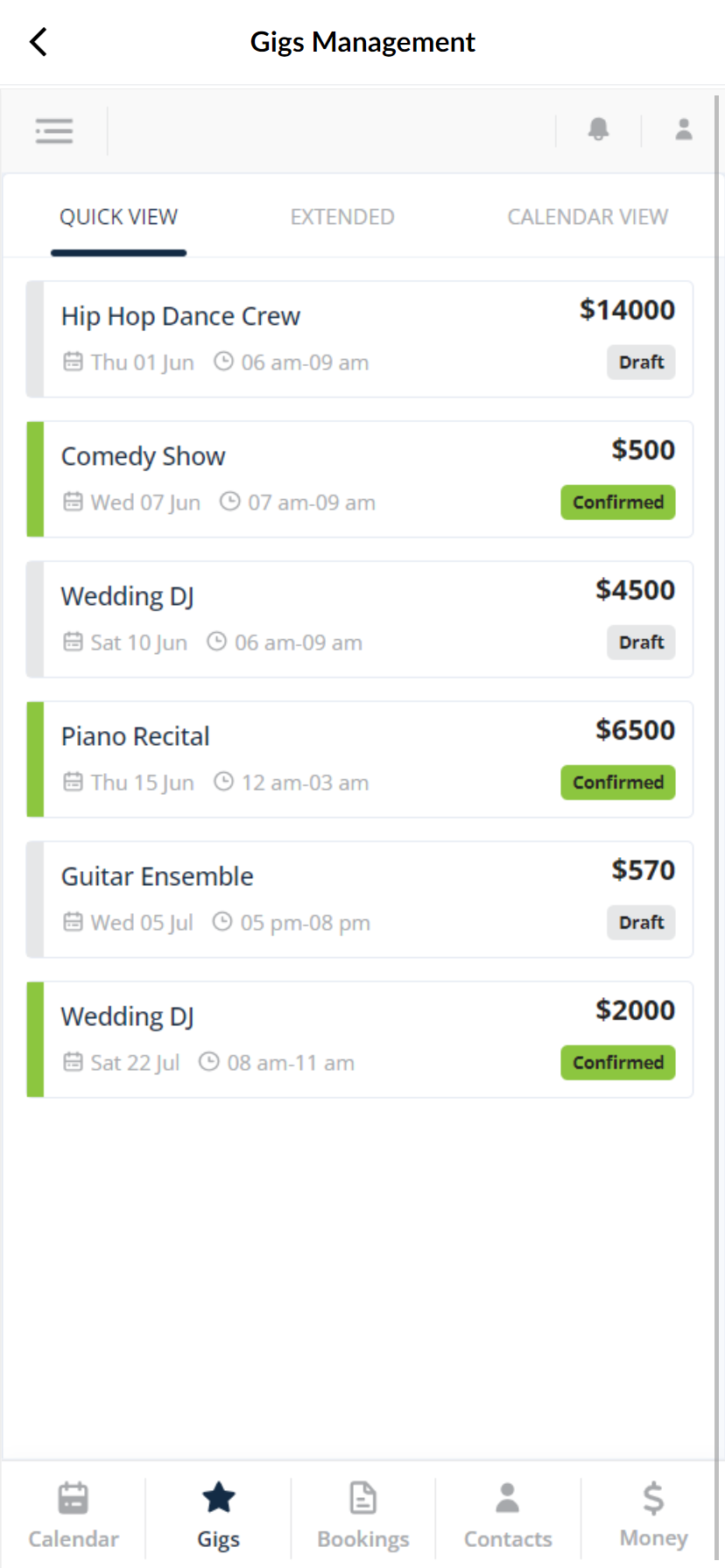
5. Then, the event booking management agency will check the chosen performers' availability and venue if it is available on the chosen date by the artist. If anyone is not available, they will update the status through the app. The artist has to approve or change the date for the gig and update the status in the app itself. This process continues until the stage is ready for “Make it as a Contract”.
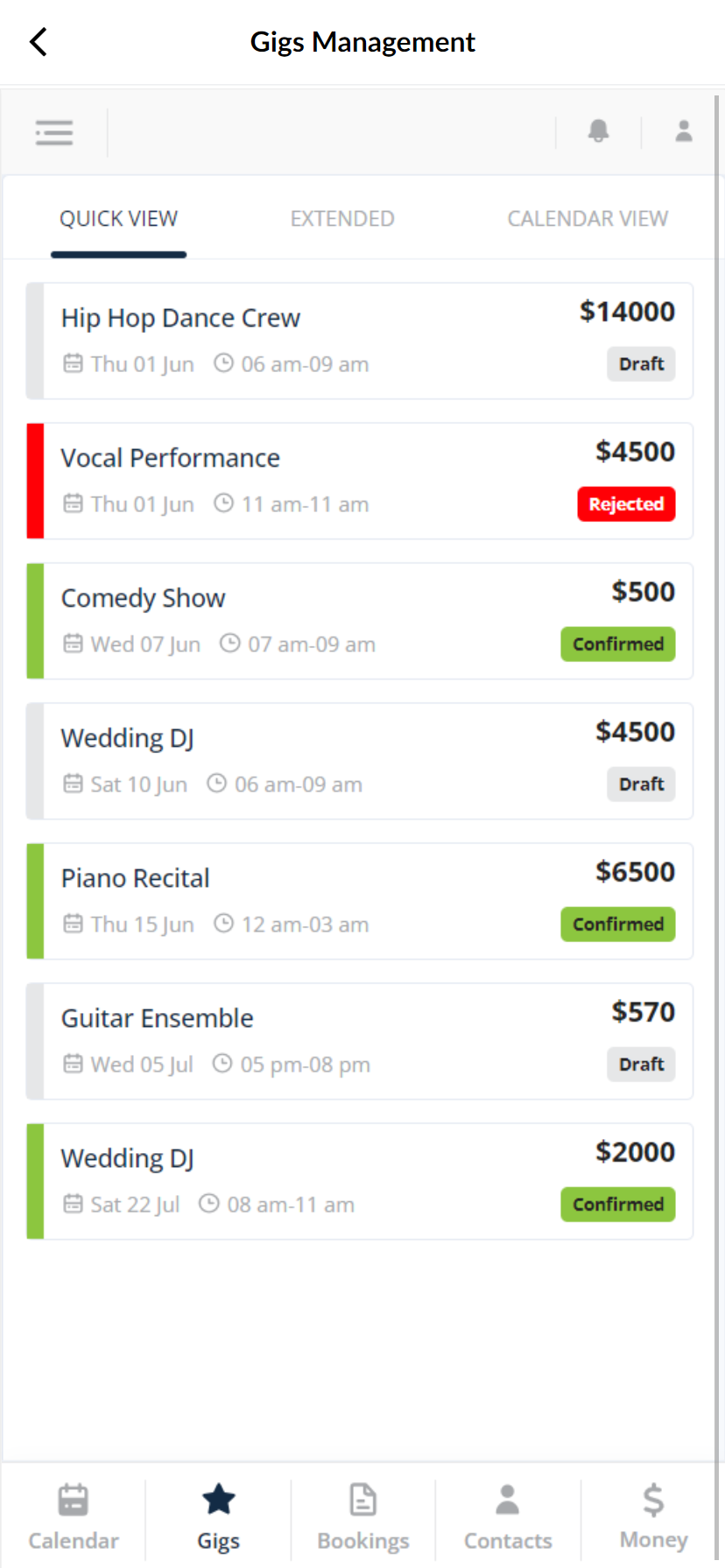
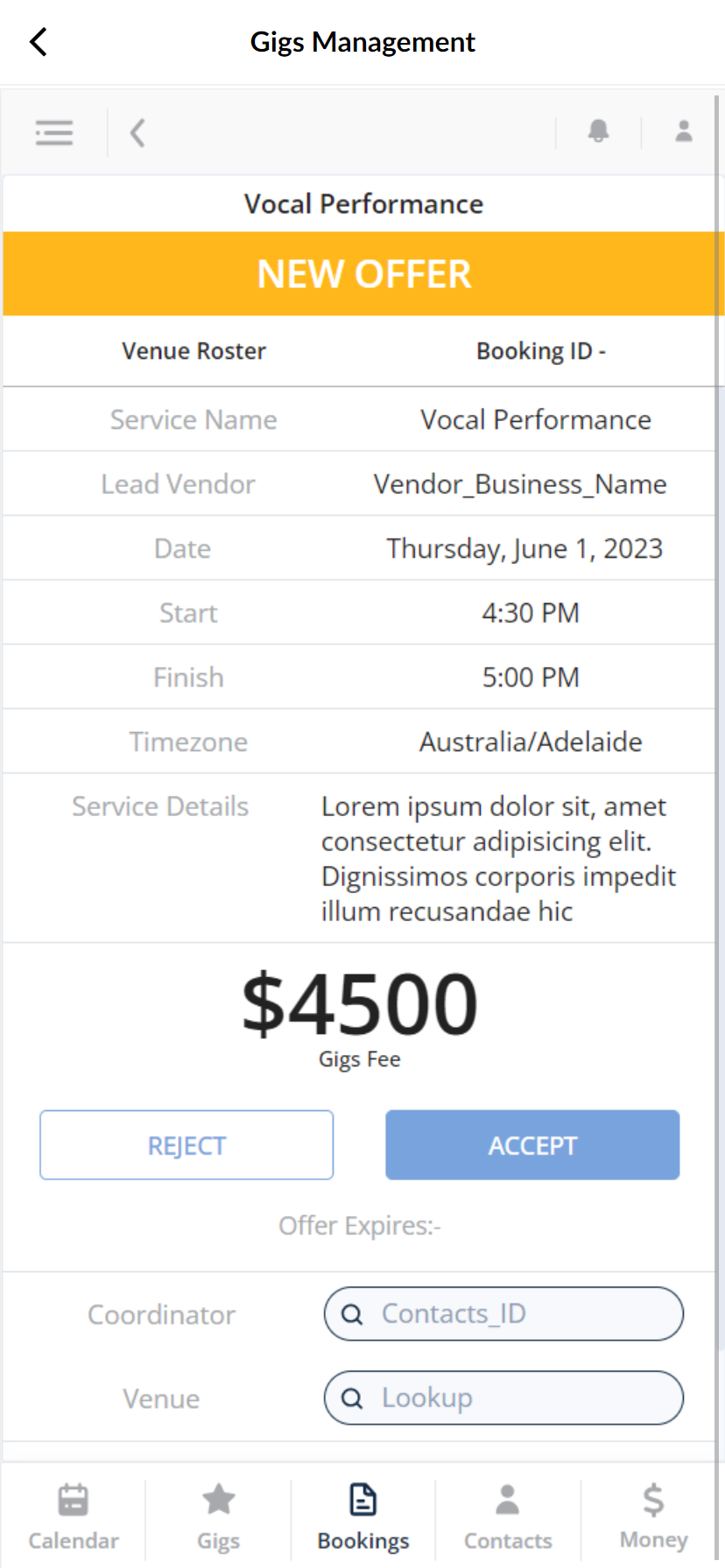
6. Once both parties agree, a contract is generated within the app, and an e-signature process is initiated. The contract is created in PDF and sent for signing. A Node.js process is triggered to generate and email the contract. This contract is hosted on AWS Lightsail for easy access and signing by the event organizers.
After the contract is signed by the event organizer, it will be automatically sent to the artist for approval/acceptance.
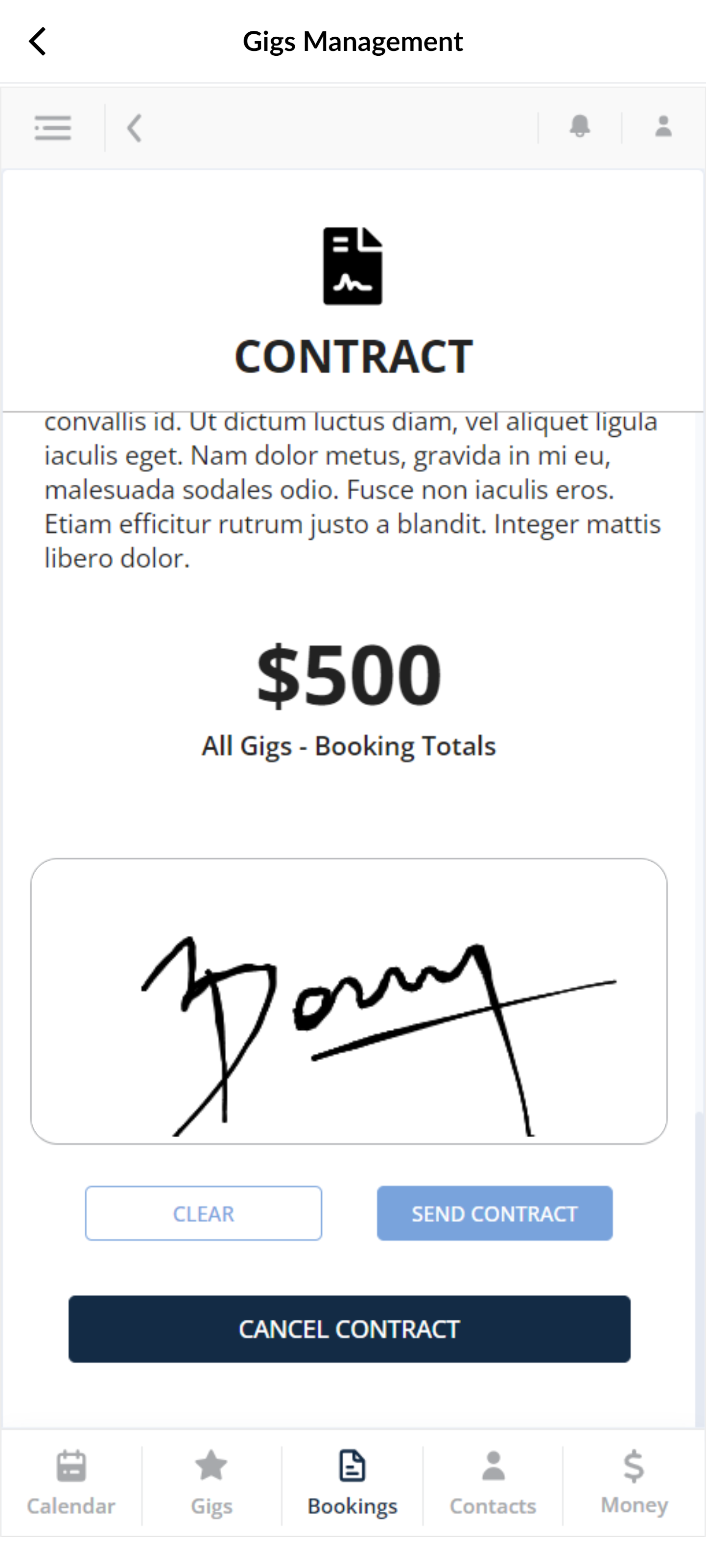
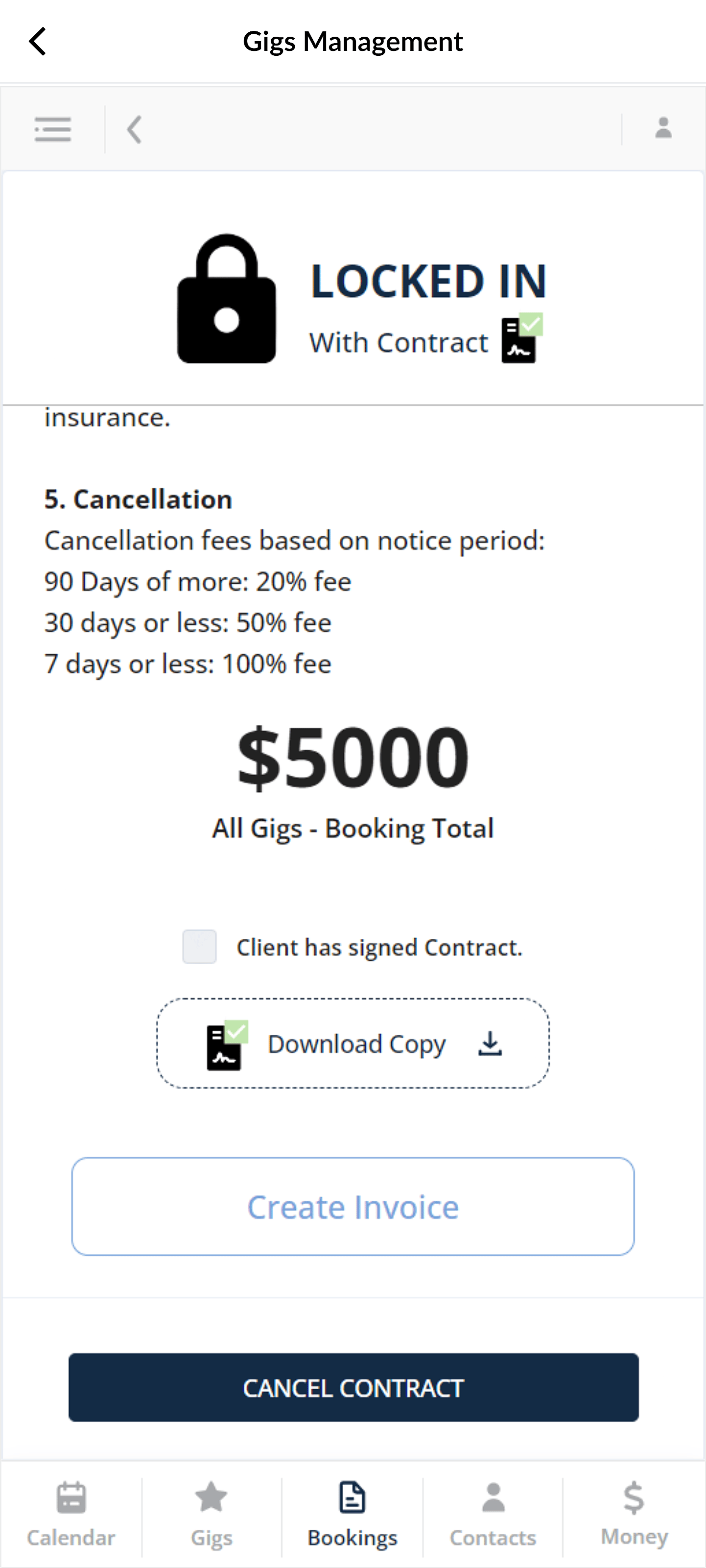
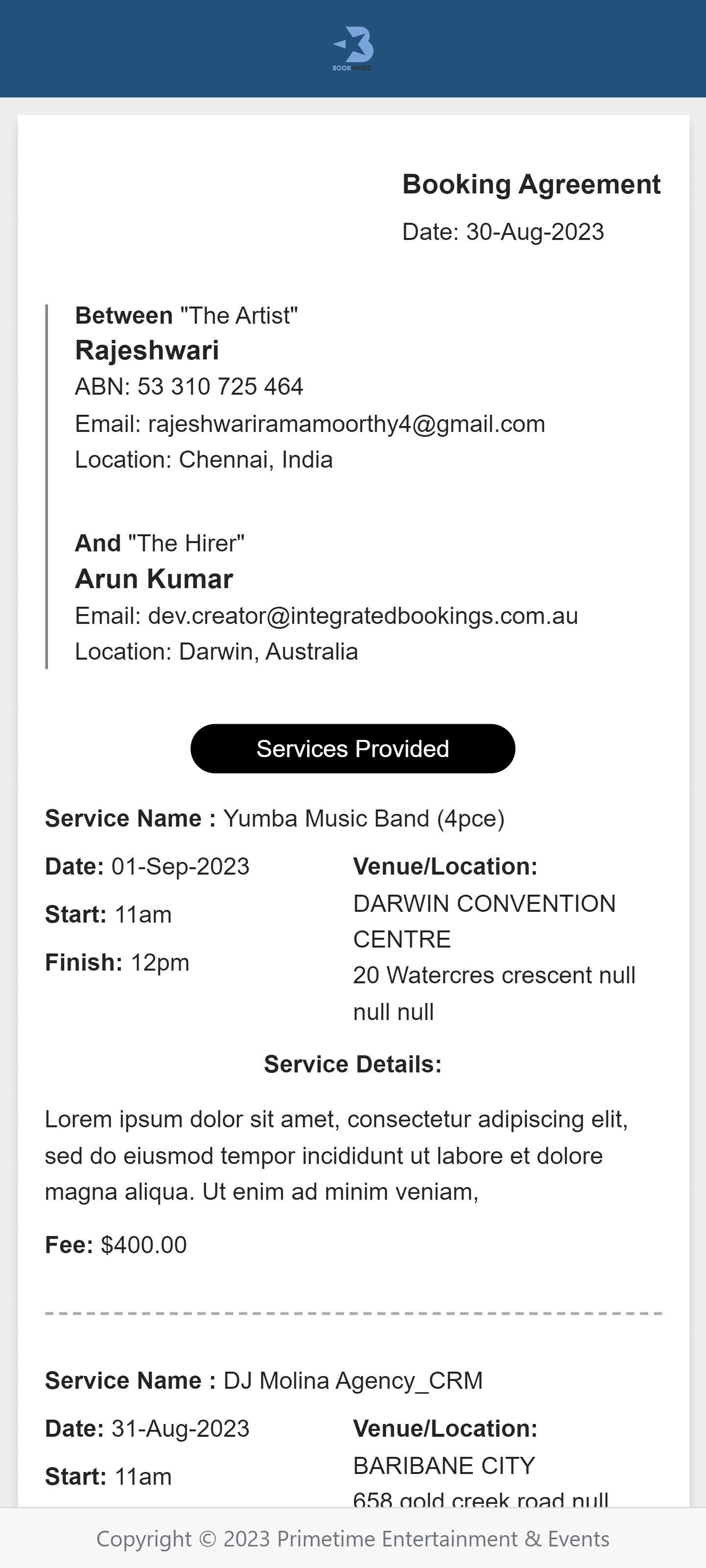
Contract Signing Workflow Highlights:
-
-
Request & Confirm: Event organizer send contract agreement to artist, who can accept, decline, or negotiate terms (e.g., pricing, set duration).
-
Automated Scheduling: Integration with calendars (Google, Outlook) to prevent double-booking and ensure real-time availability updates.
-
Contracts & Agreements: Digital contracts outlining deliverables, payment terms, cancellation policies, and NDAs, with e-signature support.
-
For Communication & Coordination:
-
-
In-App Messaging: Direct chat between clients and artists to discuss event details or special requests.
-
Notifications: Reminders for upcoming gigs, payment deadlines, or contract signings.
-
7. Once the event organizer signs the contract and the artist approves it, the Gigs Booking module likely triggers an automated process to streamline the invoicing generation and payment collection process.
Here’s how this process typically works
1. Contract Finalization
-
-
Once the event organizer and artist digitally sign the contract (via the app), the app automatically initiates the invoicing and payment process.
-
2. Automated Invoice Generation
-
-
Data Pull: The app pulls details from the signed contract (e.g., artist name, event date, venue, agreed fee, payment terms).
-
Invoice Template: Uses a preconfigured template (branded for Primetime Entertainment & Events or the artist) to generate a professional invoice.
-
Tax & Compliance: Automatically adds taxes and ensures compliance with local regulations.
-
Data Population: The module automatically fills the invoice with:
-
-Client details (name, contact info, billing address).
-
-Artist details (name, payment recipient info).
-
-Line items detailing the service (e.g., "Live Music Performance - 2 hours - $500").
-
-Total amount due, including any taxes or fees.
-
-Payment due date based on agreed terms (e.g., "Due within 7 days" or "Due on event date").
-
Unique Invoice ID: Each invoice is assigned a unique identifier for tracking purposes (e.g., INV-00123).
-
Delivery: The invoice is sent via email to the event organizer and artist.
-
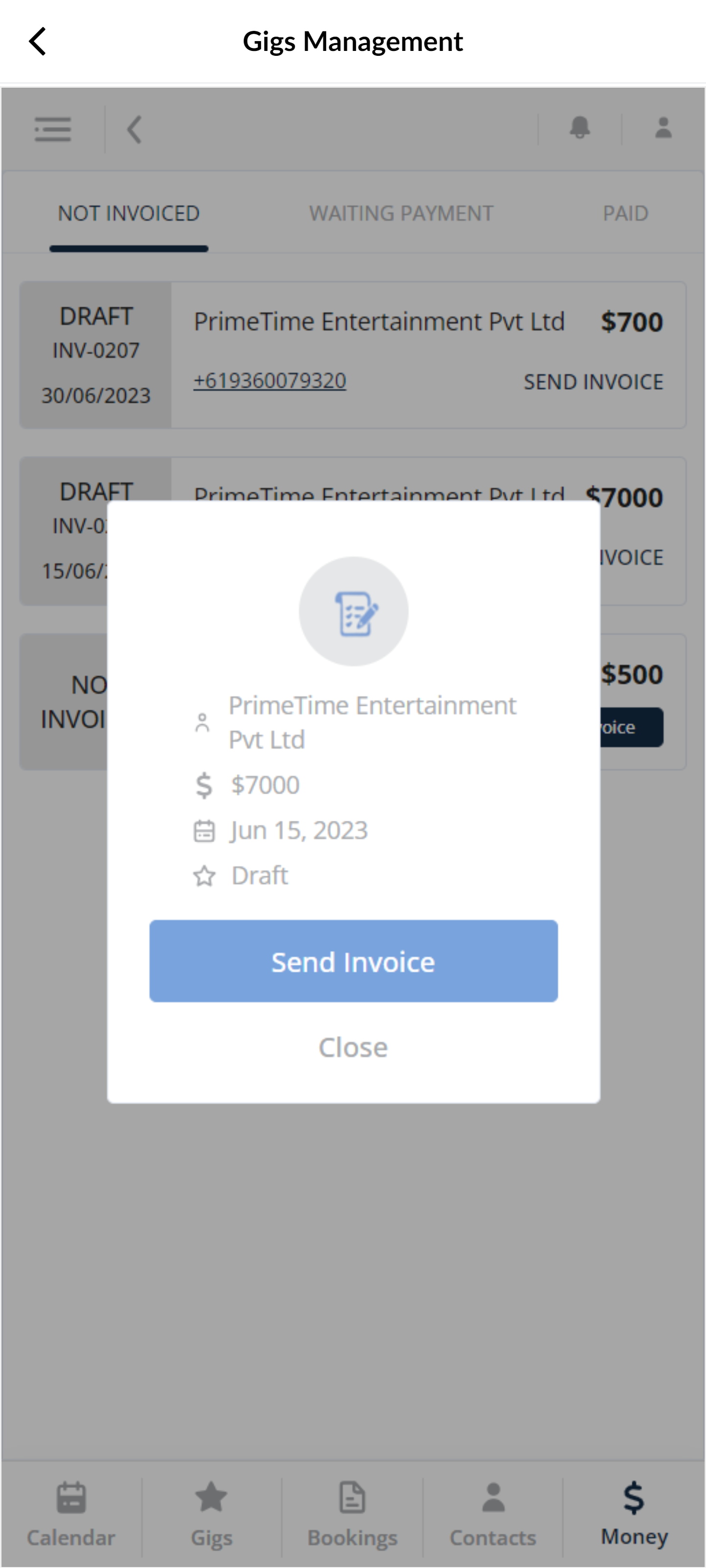
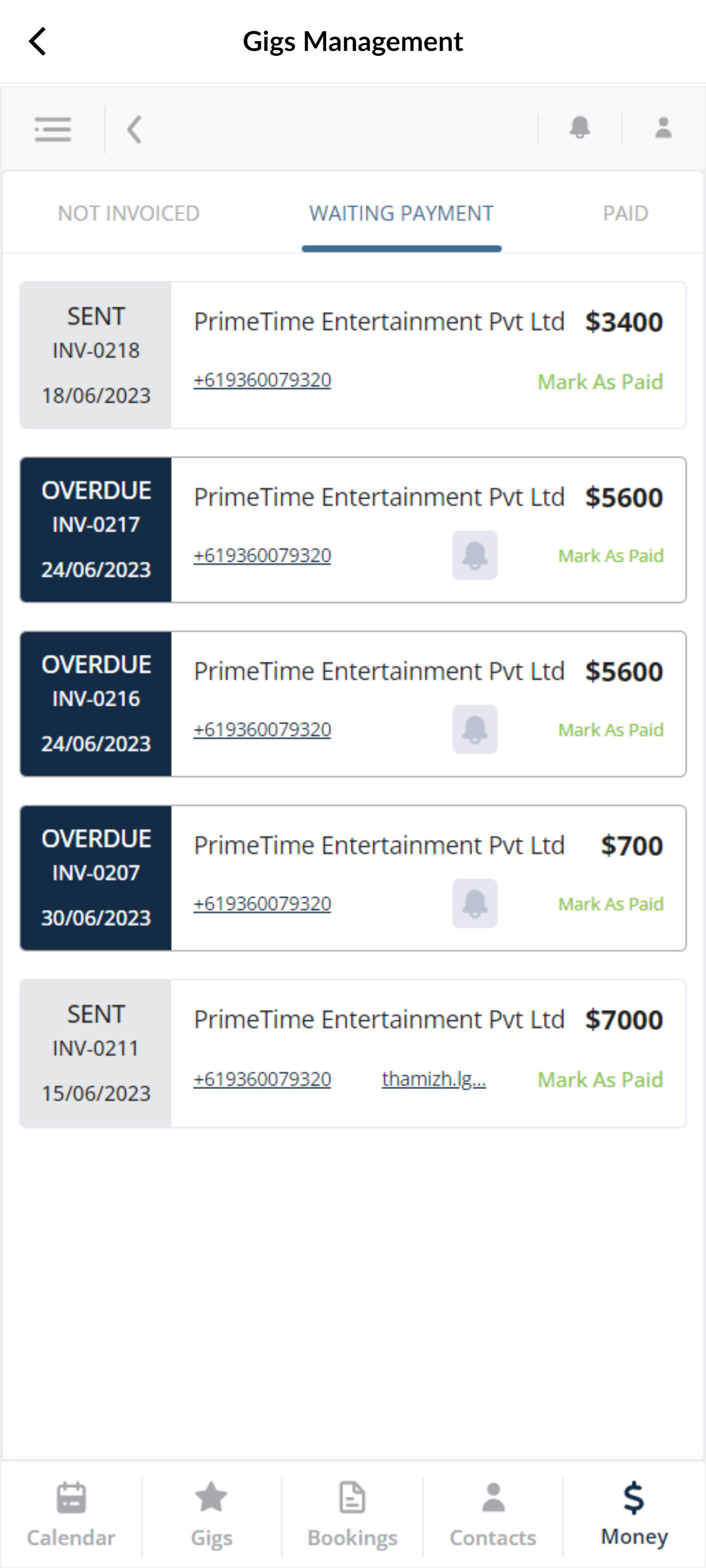
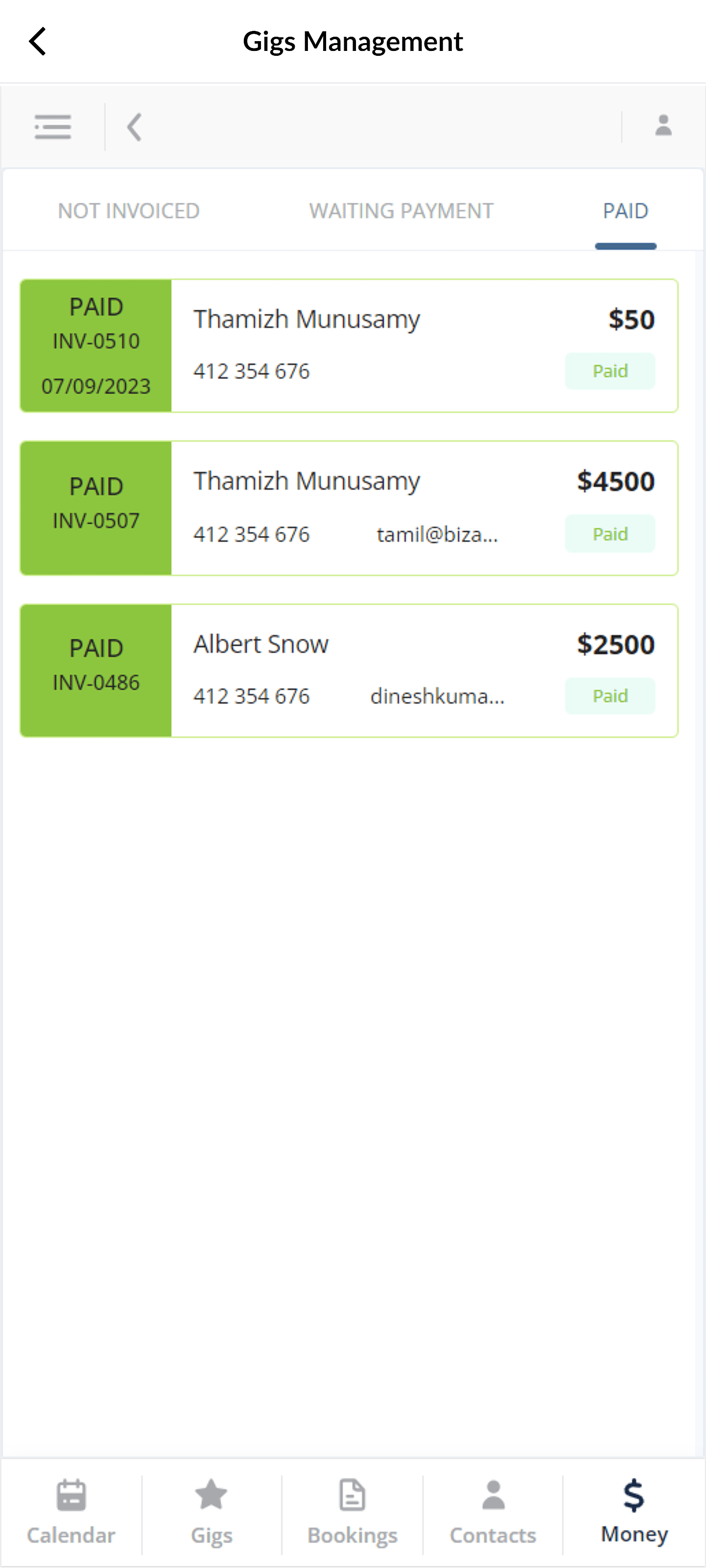
3. Payment Gateway Integration: BOOKMYGIG likely integrates with a third-party payment processor (e.g., Stripe, PayPal, or Square) to handle secure transactions. This is activated once the invoice is generated.
-Payment Link or Button: The invoice includes a clickable "Pay Now" link or button that directs the event organizer to a secure payment portal. Alternatively, the app might allow direct payment within the platform via a checkout interface.
-Payment Options: The app supports multiple methods (e.g., credit/debit cards, bank transfers, or digital wallets) to accommodate user preferences.
4. Post-Payment Actions
1. Confirmation & Receipts:
-
-
Automatically sends a payment receipt to the organizer and artist.
-
Updates the gig status to “Paid” in the app.
-
2. Reporting: Generates : financial reports for artists (e.g., monthly earnings) and organizers (e.g., event expenses).
5. Syncing with Zoho CRM:
All gig details—such as event location, date, time, performers, and payments—are automatically synced with Zoho CRM. Any updates made in the booking process are reflected in real-time, ensuring that both the event organizers and performers have up-to-date information in Zoho CRM.
Overall, the BOOKMYGIG app successfully addressed the challenges Primetime Entertainment & Events faced by providing a seamless, efficient solution for booking gigs, managing schedules, and handling contracts and payments.
By combining Zoho Creator’s backend with Angular’s frontend capabilities, we delivered a highly interactive and dynamic experience that ensured both performers and event organizers could easily manage their bookings in real time.
Client Testimonial:
“YAALI has completely transformed how we manage gigs. BOOKMYGIG has automated our entire process, from artist booking to contract signing and payments. The seamless integration with Zoho CRM ensures that we never miss a detail, making our operations significantly more efficient.”
— Primetime Entertainment & Events
— Primetime Entertainment & Events
The Conclusion:
By combining the robust backend capabilities of Zoho Creator with the frontend framework- Angular, the app not only overcomes the initial limitations but also enhances the overall user experience. This custom-built solution streamlines processes like gig bookings, contract management, invoicing, and payment handling, all while maintaining real-time synchronization with Zoho CRM.
